
Mary Reid Kelley & Patrick Kelley, Rand-Goop, 2019 (detail), A Studio Voltaire Commission in association with Forma Arts & Media Limited, Courtesy of the artists, Pilar Corrias, London, Fredericks & Freiser, New York, and Susanne Vielmetter Los Angeles Project
The Generation Game: Paul Flynn in Conversation with Studio Voltaire Director Joe Scotland
Investing in artists and audience, not-for-profit arts organisation Studio Voltaire is every bit as colourful as its director.
At a recent fundraising dinner for Studio Voltaire, Joe Scotland, the head of the vital South London not-for-profit arts organisation swished through the room in an ankle-length rainbow frock constructed by his friend, Ashish. Cutting a startling dash is one clue to unlocking his visual playfulness at the gallery. But it only tells a fraction of his story.
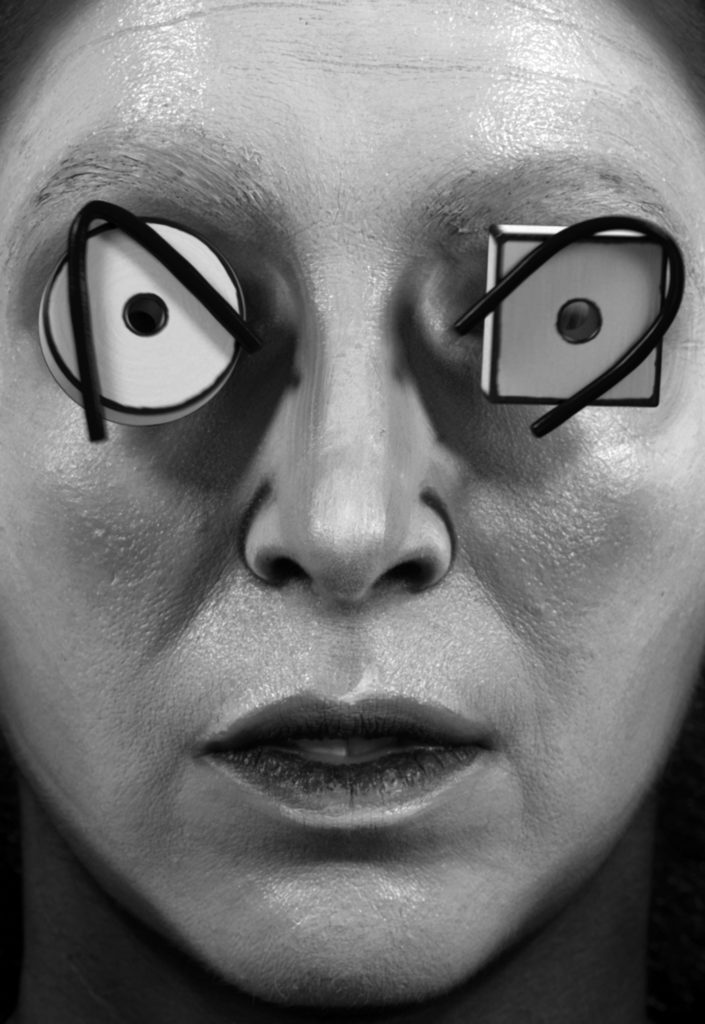
Mary Reid Kelley and Patrick Kelley, Rand Goop, 2019 (detail), A Studio Voltaire Commission, Courtesy of the artists and Studio Voltaire, Photo: Francis Ware
Joe is not a glitzy character at all, you see. His charming disposition is resolutely of this earth. He began at Studio Voltaire getting his hands quite literally dirty, regularly helping to clean the lavatories. His imprimatur on the British art world folds around this natural warmth, sweeping in like rays of sunshine. Scotland says the commissioning at the gallery is deliberately obtuse, made mostly to please himself and the staff. Leaning back on your own taste and eschewing fleeting trends – both art world and societal – could be a dangerous game to play. Luckily, Joe and his staff’s taste is immaculate.
Studio Voltaire’s recent, ambitious and complete remodelling of the gallery as a marvellously Queer Aesthetic Movement chapel, in honour of the artists McDermott and McGough’s homage to the contemporary legacy of Oscar Wilde, was the most visited exhibit in the space’s history. This church of the un-poisoned mind worked closely with community groups, bringing art directly into its surroundings, lending it a usefulness beyond its two dimensions, a particular speciality of Joe’s curatorial work at Studio Voltaire.
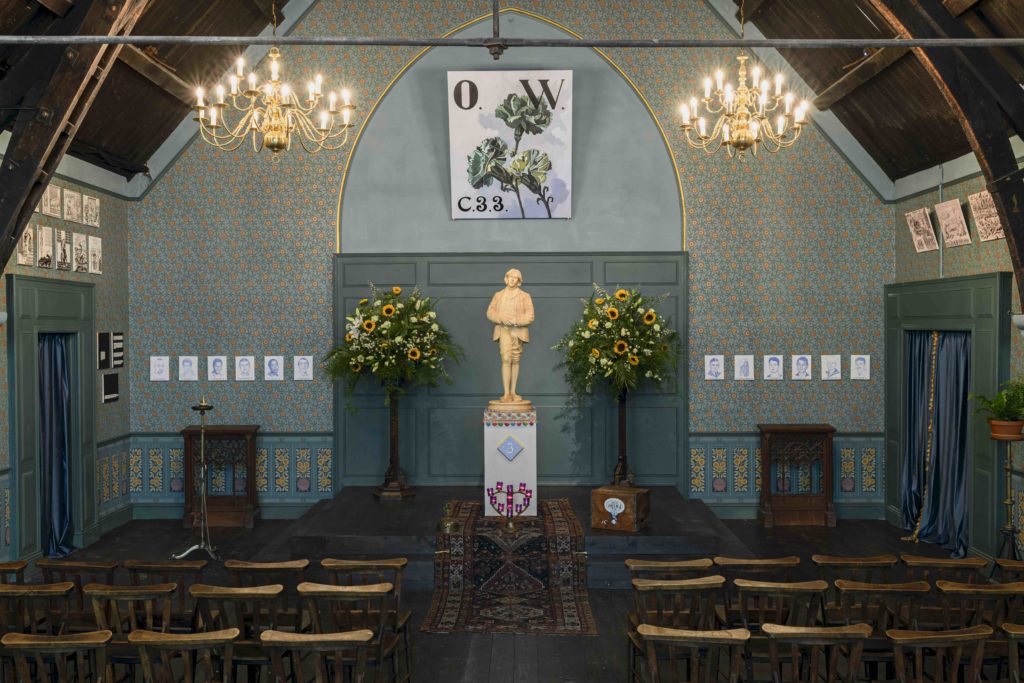
McDermott & McGough, The Oscar Wilde Temple, Studio Voltaire, London 3 October 2018 to 31 March 2019, Courtesy of the artists and Studio Voltaire, Photo: Francis Ware
Paul Flynn: What is Studio Voltaire’s relationship with its artists? Can you explain what Studio Voltaire does?
Joe Scotland: Studio Voltaire’s main role is to serve and support artists, and in particular artists who are either emerging or in some way underrepresented within the arts ecology. This is predominately done by commissioning artists to make new bodies of works – whether that is within the gallery itself or off-site. We typically start working with an artist two years in advance. This gives us an opportunity to support and help produce a significant body of work. I don’t think people always realise that we fundraise and finance each commission. We also support artists in other ways, such as providing affordable studios to 45 artists, which is incredibly important given the chronic lack of workspace.
Our audiences are also vitally important. The gallery often presents an artist’s first significant exhibition in the UK or London, so this represents a significant opportunity for UK audiences to experience the work firsthand. We are also based within a South London neighbourhood, so the audience on our doorstep is really important. We work with lots of local community groups, schools and health organisations on projects – whether commissioning artists to work within these contexts or whether it’s inviting these groups to make use of the organisation.
PF: What international artists do you feel you’ve worked with particularly successfully?
JS: Well, I would say around 75 per cent of our gallery programme is international, so there are a lot of international artists we have worked with over the years. Personally, the projects I feel are particularly successful are the ones where we have invited the artists to make the work on-site during a production residency. As well as getting to spend more time with a particular artist, it also can help challenge them in some ways. A good example is our exhibition we did with Nicole Eisenman in 2012. At the time, Nicole was only known as an incredible painter. I remember asking her what she might like to do and being rather taken aback when she said she wanted to make sculpture for the first time. She spent a month working in the space with a couple of assistants and countless bags of plaster making these incredible large-scale figures that celebrated queer and intersex bodies that filled our entire gallery. There was something rather magical and risk-taking in her experimenting in the space. And this excitement translated itself in the work. You really got a sense of the artist making the work and taking pleasure in it – it was all rather sensual!

McDermott & McGough, C33 A Holy Family, 1918 / 2018, Oil on Linen, 152.4 x 228.6cm. Photo: Ivaylo Gueorgiev
PF: What’s the current exhibition – Mary Reid Kelley and Patrick Kelley – about?
JS: Mary and Patrick’s commission has come out of a four-week production residency where they have radically transformed the gallery. For the first time, they have embedded their work within an immersive environment, unspooling the narratives within the exhibition through a series of video sculptures and wallpaintings. The artists have created a circular narrative for six totemic video sculptures. The protagonists, all performed by Mary, speak in pithy and often capricious four-line cento poems. The contents are drawn entirely from two sources: Ayn Rand’s Objectivism philosophies – limited only to positive appraisals of her work – are spliced with titles listed on Gwyneth Paltrow’s Goop website. So the narrative becomes an odd celebration of self-care and selfishness.
PF: In October, the organisation closes for a year and The Studio Voltaire Capital project begins, the most ambitious transition in its history. But what is it? And what will it achieve?
JS: Well it is an incredibly exciting, if not slightly overwhelming time for us! We have embarked on a £2.4 million capital project that will completely transform the amount of support we can offer artists, as well as expanding our cultural offer to local and international audiences. It’s vitally needed! We currently have no heating in our entire site – and our roofs leak terribly – which is obviously not ideal, especially for the artists who have studios here. When we reopen, we will not only have completely renovated our entire building but will also have 42 per cent more studios on a new mezzanine level, providing high quality workspace to over 75 artists. Plus two live/work spaces to house visiting artists and curators. We’ll also have 233 per cent more public space to allow for expanded exhibition and events programming. The scheme will create a dedicated learning and events space, a planted courtyard garden, café and first-ever permanent House of Voltaire – our very popular shop selling artists editions and artworks. We have raised over 70 per cent of the funding, including significant backing from The Mayor of London, Arts Council England and Lambeth Council. During this construction period we need to raise the final amount.
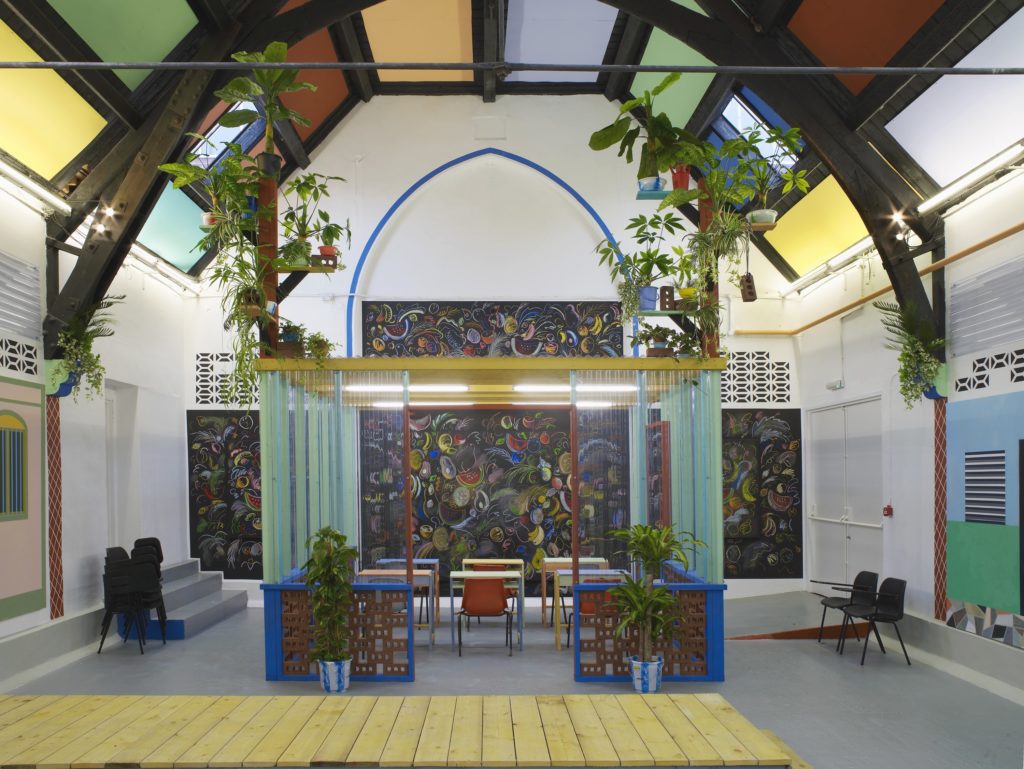
Sol Calero, La Escuela del Sur, 2015, A Studio Voltaire commission, Installation view Studio Voltaire, London. Courtesy of the artist and Laura Bartlett Gallery, London. Photo: Andy Keate
PF: What shift will that make for the organisation going forward? Is it going to change your strategy?
JS: We are really thinking about what support we should and need to be giving artists. One of the main serious problems in London (and elsewhere) is the lack of affordable workspace. And this problem is especially compounded if you are an artist with limited financial means or little access to the system. We are introducing a new award which will support seven artists with a free studio for a two-year period. This will be specifically aimed at these artists, and is incredibly exciting. The new building also offers us an exciting opportunity to play more of a civic role within our local area. A lot of groups and organisations no longer have spaces to meet and socialise due to the funding cuts, especially at a local level. Our new building will be able to be much more welcoming and will have new dedicated spaces which local organisations and audiences can access.
PF: Before the tape switched on, you were saying you commission exhibitions to please yourself?
JS: Yes, which came out of the early days of us not really knowing what we were doing, so it was a simple thing of putting on exhibitions that we wanted to see. When I started here over 15 years ago, it was a simple matter of inviting artists we were excited about and doing things we wanted to see happen. I think that’s really stayed within the programme. It’s very idiosyncratic and it’s not really presenting an overview of what’s current within contemporary art right now. It’s very much stuff I want to see. I like those things where something’s slightly out of step. The Oscar Wilde Temple was a real older person’s show. I liked that it spoke more to an older generation. It was interesting that a lot of younger audiences just didn’t know how to engage with it and found it almost too heavy.
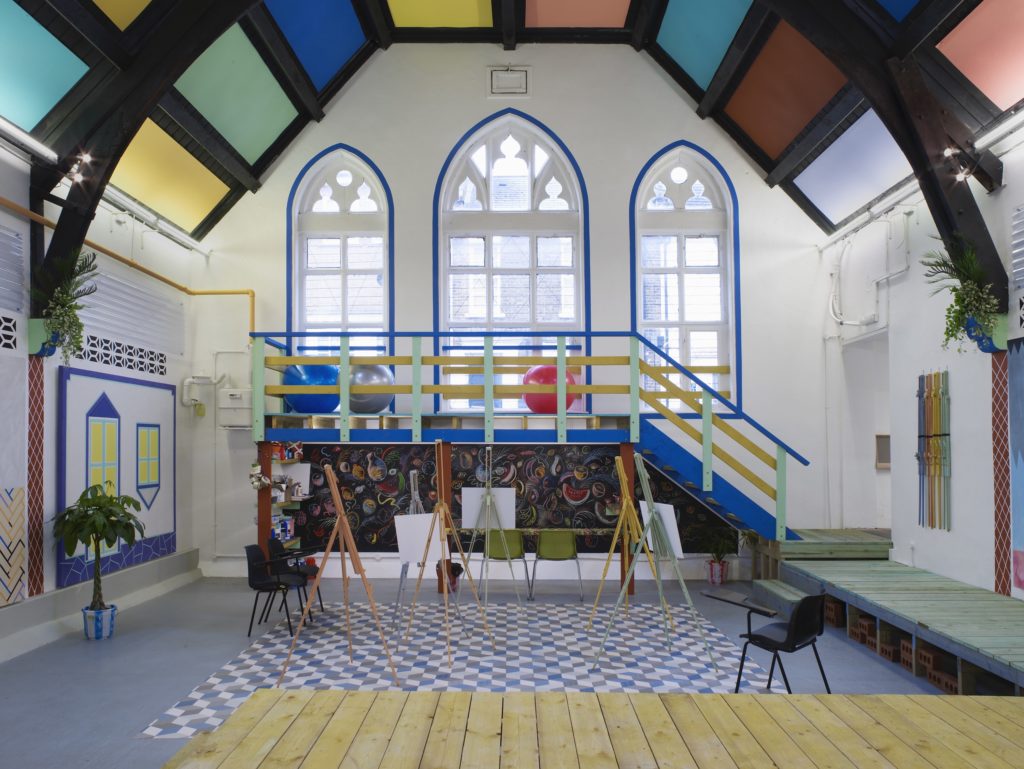
Sol Calero, La Escuela del Sur, 2015, A Studio Voltaire commission, Installation view Studio Voltaire, London. Courtesy of the artist and Laura Bartlett Gallery, London. Photo: Andy Keate
PF: Is Scotland your real name?
JS: It is, really. It’s a rare name. I do like it. When I started going there a lot – I love Glasgow and it has such a good art scene – I thought when I gave my bank card to someone they’d make a fuss over it and get excited. And of course no-one said anything.
PF: What were your first art awakenings?
JS: I was definitely a creative child, in a family which was, I’d say not directly creative. My mother was originally a nurse, and then went into education and my dad worked in a tractor factory. So doing art, or arty things, felt separate to the rest of the family. We never really went to galleries or museums. My dad used to get Reader’s Digest and there was art on the back cover. There was a David Hockney work, a 1980s one, when he’d moved to LA, it was a hillscape with incredible colours. I remember tearing it out and putting it on my wall at 11 or 12. Pulling images from magazines lead to buying cheap art books. I loved stuff I can’t bear now, like Monet. We went on a school trip to Paris and I remember thinking the Monets were really ugly because you could see the brushwork and paint. I was so used to the flat, small images of reproductions. I was really disappointed.
PF: What was it that drew you to that Hockney image?
JS: Growing up in Westham, a tiny village outside of Eastbourne, and then seeing this exoticism of colour felt like a different life that you could potentially have. There probably is a connection to sexuality. That restrictiveness of being in a small village, being in a straight family, it was an eye-opener, a longing for something.
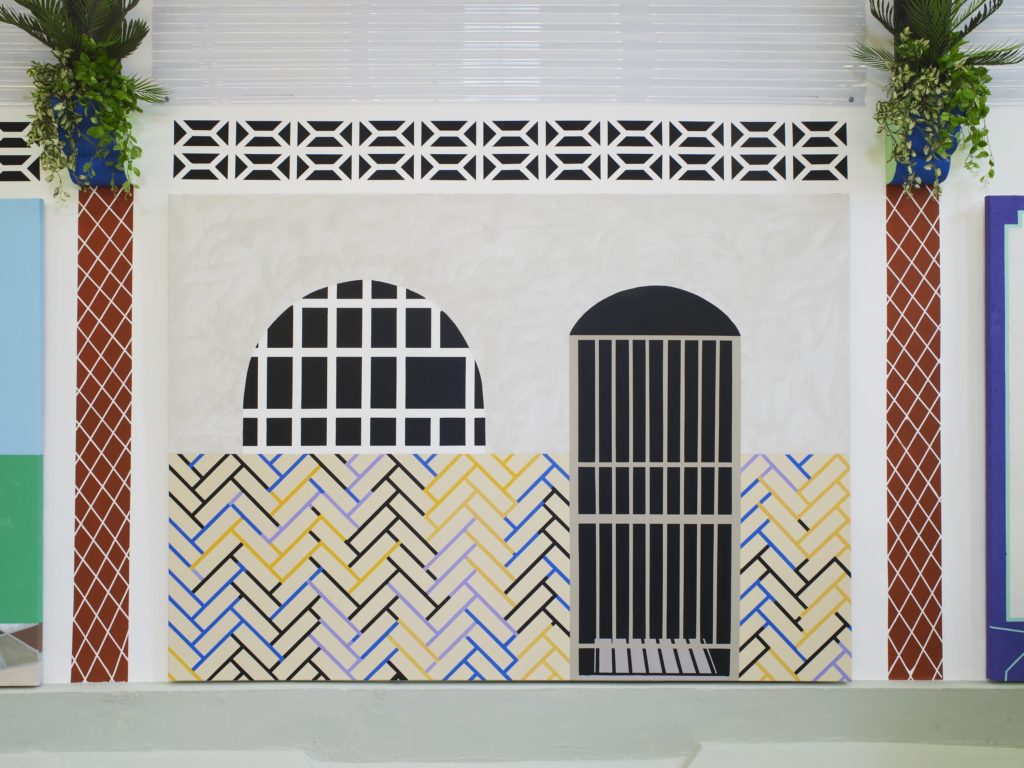
Sol Calero, La Escuela del Sur, 2015, A Studio Voltaire commission, Installation view Studio Voltaire, London. Courtesy of the artist and Laura Bartlett Gallery, London. Photo: Andy Keate
PF: Do you have a pop star artist, one you became obsessed with as a teenager?
JS: I got really obsessed with Helen Chadwick. She was the first proper contemporary artist I was really into. She came out in the late 1970s and was really active in the 80s with these amazing conceptual works, like these towers of rotting fruit and vegetables. It was all about life and death, decay and the frailty of the body. She used everyday materials in amazing ways – household objects, meat and fur. I remember these incredible installations of photographs of flowers set in cleaning products. I was lucky at school, I had progressive art teachers. Television was also really important to me. There was a time when there was really good arts programming on TV. The really famous one with Melvyn Bragg, The South Bank Show. Then also on Channel 4, they had a show called Without Walls. We used to have the Daily Express in the house, so I would’ve never got to that stuff otherwise. Helen Chadwick presented a TV show on Frida Kahlo – that is how I got into her. She had a really straight bob of jet black hair and red lipstick, quite fiery. There was this amazing work she did called Piss Flowers. which were almost the Warhol flowers made into sculpture, where she’d pissed, and her boyfriend pissed, into the snow and cast it. Her piss, which is hotter because it’s internal, made the stamen and his piss did the outline of the flower because it’s external and coming out slightly higher, not as deep into the snow. This amazing work was really bodily and sexual. For a fourteen-year-old? Amazing.

Installation view of Helen Chadwick, Wreath of Pleasure No 1 – 13, 1993-4, and Piss Flowers, 1991-2, at Richard Saltoun Gallery’s booth at Art Basel in Basel, 14 – 17 June 2018. © The Estate of the Artist. Photo: Mark Blower. Courtesy of Richard Saltoun Gallery
PF: What do you think it was about our generation that gave us the confidence to have a job our parents would’ve understood to be a hobby?
JS: I felt something inherent in me that knew I could do it. But I also saw it as a means of escape. I wasn’t that bothered about going to University. I was bothered about moving to London.
PF: Why do decent functioning societies need art schools?
JS: Because culture is so important. It saved me. What depresses me now, not just at art school but education generally, is that there isn’t so much of that opportunity for escape anymore. It makes for bad culture if you don’t have that mix of people.
PF: Is the artist’s story ever separate from the art?
JS: That’s a difficult one. In some ways I’d like to believe it’s not important.
PF: What do you know about Voltaire, the person?
JS: Interestingly enough, I know absolutely nothing about Voltaire, the person. When people ask how we got the name, they have this grand expectation – when the organisation started we were on Voltaire Road, so it’s a real let down for people. I really like being here. It’s such a weird area that gives us quite a lot of freedom, somehow. Not having that pressure of having competition from other galleries. Clapham is very interesting. During The Oscar Wilde Temple we had all these different community groups coming through from the local area. And I think culture’s role is generating knowledge. The audience have become a part of the process of generating knowledge, understanding and reflection. With the temple we had people coming and talking about their experiences of HIV or of being homophobically attacked. It’s been incredibly meaningful. It stops it being this weird abstract thing which exists just in an art gallery.
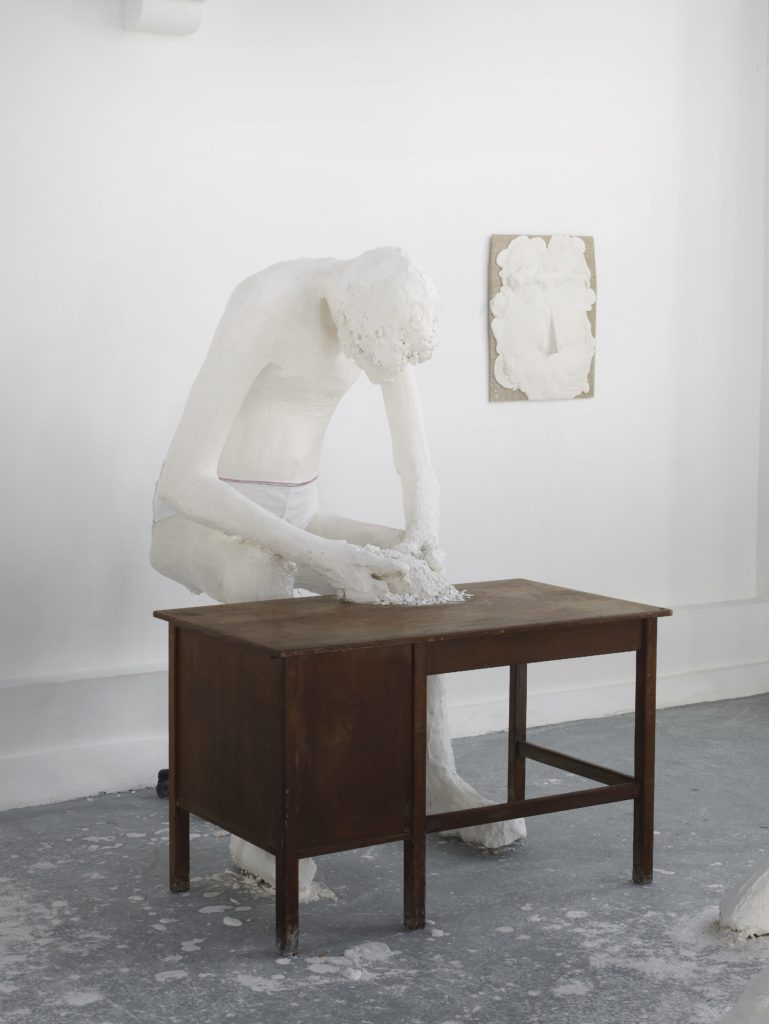
Nicole Eisenman, Tis but a scratch’ ‘A scratch?! Your arm’s off!’ ‘No, it isn’t”, 2013 (installation view), Studio Voltaire, London. Courtesy of the artist, Galerie Barbara Weiss, Berlin; Leo Koenig Inc., New York and Susanne Vielmetter, Los Angeles. Photo: Andy Keate
PF: Is Studio Voltaire a means to an end for you, or an end in itself? Could you see yourself in a place like Tate Modern?
JS: No. I don’t think I’d be good with a hierarchy like that. I like a small team. I’m very fortunate. I have a lot of autonomy. In another structure, I think I’d struggle.
PF: Do you feel like you’re becoming a grand dame of the art world at Studio Voltaire?
JS: The organisation is growing a lot, we’re scaling up, our ambitions are scaling up and I’ve had to slightly change my mindset on what my role is. I used to really enjoy cleaning the toilets. My role has changed quite a bit, much more managing relationships and staff now. Although I’m still pretty hands on. I’ve really had to learn to let the team just get on with things without me being involved with every aspect. I’ve also had to get used to public speaking which still gives me the fear.
PF: You really looked the part in your Ashish dress…
JS: I think that’s just about being quite shy in groups. If you wear something like that, you let the clothes talk for you. I think people appreciate that I’m still quite nervous.
PF: Throughout 2020, when the renovation is being done, Studio Voltaire will present a programme of off-site projects and commissions. Are you excited about new contexts?
JS: We are opening our final off-site House of Voltaire in Cork Street in the Autumn. House of Voltaire has become incredibly important for us, both as a fundraiser and as a development tool for meeting new audiences and supporters. It can be a challenge working with over 100 artists and designers – but an incredibly exciting one too. Next year we are doing a special programme of three projects and commissions working with artists that we have previously worked with in our 25-year history. It is an exciting opportunity to work with artists again, and also work in some very interesting and unusual locations in London.


